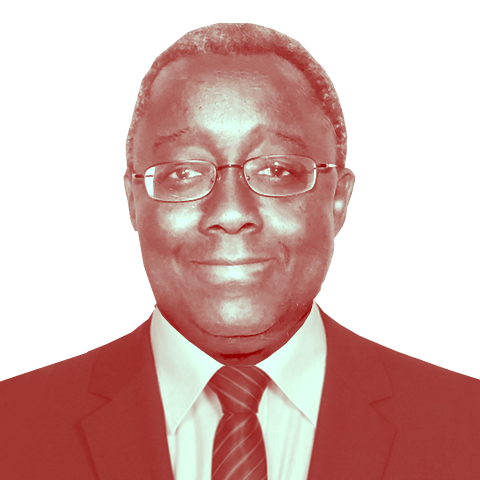
Swiss Scientific and Medical Corps: a new idea to fight pandemics
Switzerland should create a new type of scientific-military collaboration to address public health challenges like the one we are now experiencing, argues Rudolph Thomson.
The response of many countries to the Covid-19 pandemic has been characterized by calls for a “war footing”, and rightly so, for this is war even though the enemy is unarmed and invisible. It therefore behooves us to expand our philosophy and approach to armed conflict with complementary scientific and medical capabilities and resources to fight unarmed conflicts.
In an extraordinary move on March 16, the Swiss government deployed up to 8,000 troops to help in the combat against the coronavirus. It was the first deployment of the Swiss army since the Second World War. Accounts of the deployment have not dwelt on battlefield strategy and tactics, nor on military hardware or munitions; instead, the talk and action have centered on intensive care units, hospital beds, medical equipment and supplies, and various medical equipment including masks, gloves, and disinfectant gel for frontline healthcare workers and the rest of us. That is the point. These are some of the assets required to fight an unarmed conflict such as Covid-19.
If the Swiss Epidemic Act had more clearly defined a collaborative role for the military and public health, and if we had invested in the required infrastructure, the response to Covid-19 would have been more efficient and cost-effective. Widespread lockdowns and immobilization of the country and economy may have been avoidable.
Swiss Scientific and Medical Corps
I fervently support the continuing existence of the Swiss army and its conscription policy to defend the population should it be necessary. I do not propose curtailing the functions of the army. But we can and should seriously consider its composition to include a sizeable corps of scientific and medical personnel encompassing numerous types of expertise and disciplines.
Under such an arrangement, the Swiss army and the Federal Office of Public Health would jointly serve as competent authority, the former focusing on security and logistics and the latter on detection, containment and eliminating the disease. The enterprise would be funded from the budgets of the army and the Federal Office of Public Health. Private sector entities with a vested interest in public health would contribute both financial and human resources.
A new Swiss Scientific and Medical Corps (Swiss Sci-Med Corps) could include up to 20,000 “medical personnel” including scientists, epidemiologists, immunologists, virologists, cardiologists, radiologists, disease investigators, nurses, medical technicians and other professionals. Personnel would be recruited (as well as conscripted) from technical schools and universities and be stationed throughout the cantons.
The Swiss Sci-Med Corps would be structured as a public-private partnership with Swiss scientific and medical research labs, universities and medical schools. Associations and collaboration with agencies such as the World Health Organization and various centers for disease control would be undertaken as deemed appropriate by political, military and medical authorities.
A new type of invasion
Aside from rogue attacks on Switzerland by both sides during the Second World War, it has been some 170 years since we have experienced fatalities from an armed conflict, in the Sonderbund War which cost us fewer than 100 lives. In the time since, another unarmed conflict, the Spanish Flu, cost our country more than 25,000 lives in 1918.
But Switzerland’s reputation as one of the wealthiest and healthiest countries in the world and as the second-ranked nation in healthcare expenditures did not impede the invasion by the coronavirus. In fact, it has also forced us into economic and financial support measures representing more than 9% of GDP.
Notwithstanding the valiant response of Swiss authorities, the overall costs will weigh heavily on the nation for years. The social costs in terms of stress, depression and other mental health issues will be profound and exacerbated by a lingering fear that a resurgence or new outbreaks would be devastating.
A service for the world
A competent, well-organized Swiss Sci-Med Corps would have the potential to become a new pillar of the Swiss economy by providing its expertise and available capacity to multilateral agencies, countries or regions when not needed domestically. This endeavor would build on and enhance Switzerland’s world renown for quality, reliability and efficiency. Thus, epidemiological and other large-scale medical services could become important contributors to the nation’s GDP. The Corps would join tourism, hospitality, watchmaking, precision tools & equipment and chocolates as key pillars of the Swiss economy.
Now is the time to build on the rich heritage and peaceful institutions that so define the Swiss nation. A Swiss Sci-Med Corps would invoke the proud legacy of the Red Cross of Henri Dunant, Henri Dufour and their eminent co-founders. It would also honor and advance the legacy and efficacy of Dufour’s “gentle” army in its conduct of the Sonderbund War. This inspired our 1848 constitution which revealed how the collective spirit of our cantons could form a Switzerland that is ‘one for all, all for one’. Can we renew that spirit and share it with the rest of the world?

In compliance with the JTI standards
More: SWI swissinfo.ch certified by the Journalism Trust Initiative
































You can find an overview of ongoing debates with our journalists here . Please join us!
If you want to start a conversation about a topic raised in this article or want to report factual errors, email us at english@swissinfo.ch.